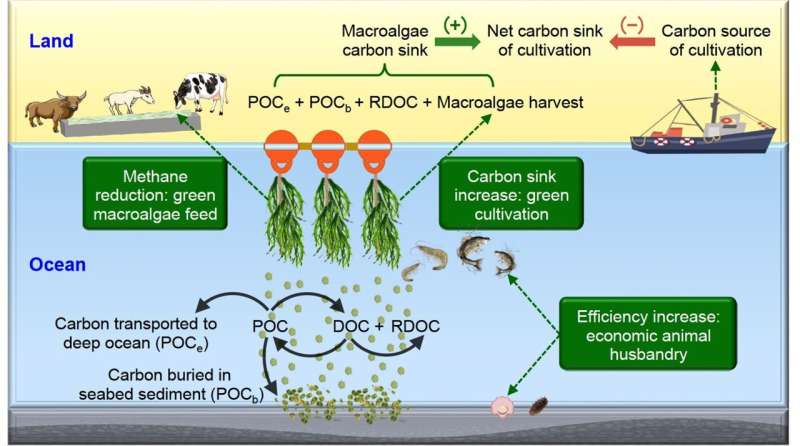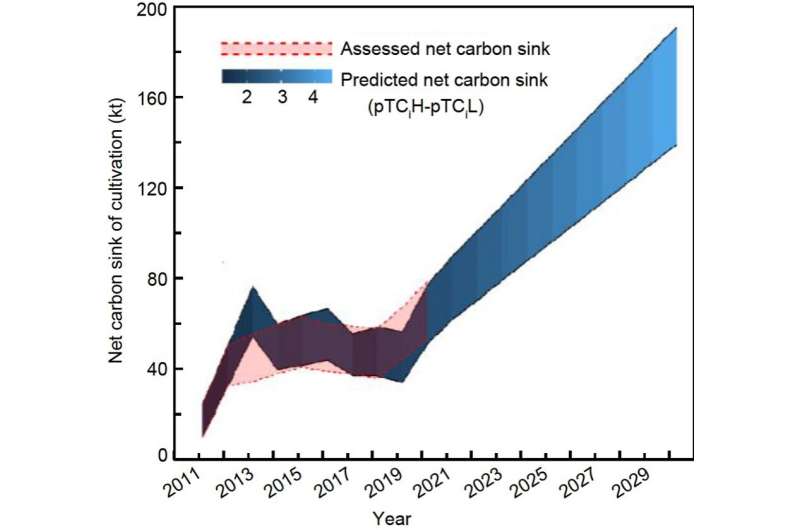This article has been reviewed according to Science X's editorial process and policies. Editors have highlighted the following attributes while ensuring the content's credibility:
fact-checked
peer-reviewed publication
trusted source
proofread
Average annual net carbon sink of Gracilaria cultivation in China from 2021 to 2030 may double last decade's

A marine research team led by Professor Yan Qingyun has proposed a method to assess the net carbon sink of marine macroalgae (Gracilaria) cultivation. Then, they calculated the net carbon sink of Gracilaria cultivation in China based on the yield of annual cultivated Gracilaria in the last ten years.
Also, the net carbon sink trend of Gracilaria cultivation in the next ten years was predicted by the autoregressive integrated moving average model (ARIMA). Finally, they explored the potential carbon sink increase and methane reduction related to Gracilaria cultivation in China through a scenario analysis.
Their results suggested that the net carbon sink of Gracilaria cultivation in China was about 32.1-92.4 kilotons per year from 2011 to 2020, and showed a great annual growth trend. Specifically, the predicted average annual net carbon sink of Gracilaria cultivation from 2021 to 2030 would double that of the last ten years (i.e., increase to 77.8-191.4 kilotons per year).

Thus, the Gracilaria cultivation could contribute considerably in the achievement of China's carbon peak goal. Moreover, under a scenario of producing ruminant green feed with additional Gracilaria cultivation, each ton of macroalgae was predicted to reduce carbon emission (i.e., methane) by 0.33-0.68 tons.
In summary, marine macroalgae cultivation might form a synergistic chain of "carbon sink increase-water purification-economy-methane reduction." A synergistic new model that operates through marine macroalgae cultivation, economic aquaculture, and green feed production was proposed in this study.
The work is published in the journal Science China Earth Sciences.
More information: Yifan Xu et al, Assessment of carbon sink potential and methane reduction scenarios of marine macroalgae (Gracilaria) cultivation, Science China Earth Sciences (2023). DOI: 10.1007/s11430-022-1053-3
Journal information: Science China Earth Sciences
Provided by Science China Press




















